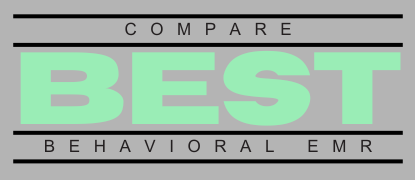If you’re a behavioral health practice owner or clinician, you know the importance of having a reliable behavioral health EMR (Electronic Medical Record) system. An EMR system not only streamlines documentation and improves practice management but also directly impacts patient care and satisfaction. However, switching behavioral health EMR systems can seem daunting, especially when you fear potential disruptions to patient care, lost data, or downtime. The good news? With proper planning and execution, switching EMRs can be smooth, painless, and ultimately beneficial for your practice.
This guide provides a clear, step-by-step strategy to help you make the switch without compromising your quality of service or patient satisfaction.
Why Consider Switching Behavioral Health EMR Systems?
Before diving into how to switch, it’s helpful to understand why many behavioral health practices decide to transition to a new EMR:
- Enhanced Functionality: Modern EMRs offer advanced documentation tools, customizable treatment plans, and integrated telehealth features.
- Improved Efficiency: A well-designed EMR simplifies workflows, saving practitioners valuable time and reducing administrative burden.
- Better Patient Care: EMR systems tailored specifically to behavioral health can enhance patient communication, care coordination, and outcomes tracking.
- Cost Savings: Switching to a more competitively priced EMR can significantly reduce ongoing expenses.
Step-by-Step Guide to Switching Behavioral Health EMR Systems
Step 1: Clearly Define Your EMR Goals
Before looking for a new EMR, outline exactly what you’re hoping to achieve by switching. Do you need better practice management tools? Improved billing and RCM (Revenue Cycle Management)? Enhanced reporting or analytics? Having clear objectives helps you evaluate potential EMRs objectively.
Step 2: Involve Your Team Early
Your staff, clinicians, and administrative team will be the daily users of the chosen EMR. Their input is crucial for a successful switch. Gather their feedback about current pain points and desired features. Their early involvement ensures better buy-in and smoother implementation down the line.
Step 3: Evaluate and Select the Right EMR System
Research several EMR options specifically designed for behavioral health practices. Look for platforms that offer:
- User-friendly interfaces and customizable workflows
- Robust data migration support
- Reliable customer support and training resources
- Well-designed patient portals and communication tools
- Integrated RCM and CRM capabilities as needed
For guidance, consider performing a free practice analysis to help you identify the best behavioral health EMR match for your unique practice needs.
Step 4: Develop a Data Migration Plan
One of the most critical components of a successful EMR switch is smooth data migration. Work closely with your new EMR provider to develop a clear plan for secure data transfer. Make sure to:
- Identify exactly what data needs transferring (patient demographics, clinical notes, billing information, etc.)
- Establish timelines and clear responsibilities for both your team and the EMR provider
- Conduct multiple tests beforehand to verify data accuracy and completeness
For additional guidance on data migration, check out this helpful resource from the Office of the National Coordinator for Health Information Technology (ONC).
Step 5: Schedule Training and Onboarding Sessions
Effective training is essential to minimize disruptions. Schedule comprehensive training sessions for all staff members well before the EMR go-live date. Provide tailored training that addresses each team member’s unique role and responsibilities within the system.
Step 6: Gradually Transition and Monitor Progress
Rather than switching overnight, consider a phased approach. Begin with one department or a small group of staff, monitor closely, and gradually expand usage. During this period:
- Encourage open communication and feedback from your team
- Stay in close contact with your EMR vendor for technical support
- Regularly assess the new EMR’s performance against your initial goals
Common Pitfalls to Avoid When Switching EMRs
To ensure a smooth transition, keep an eye out for these common challenges:
- Underestimating Training Needs: Don’t assume staff will “pick it up as they go.” Invest in adequate training.
- Poor Communication: Clearly communicate timelines, roles, and expectations to avoid confusion and anxiety.
- Inadequate Testing: Rushing data migration without thorough testing can lead to data errors and lost productivity.
Measuring Success After Switching Behavioral Health EMR Systems
Once you’ve made the switch, regularly measure your new EMR’s impact on practice operations and patient care. Consider metrics such as:
- User adoption rates and satisfaction
- Time saved on administrative tasks and documentation
- Patient feedback on convenience, communication, and satisfaction
- Revenue growth or cost savings
Tracking these metrics helps you continually improve and make the most of your new EMR system investment.
Conclusion: Switch With Confidence and Improve Your Practice
Switching behavioral health EMR systems doesn’t have to be overwhelming. By planning strategically, involving your team, clearly defining goals, and choosing the right EMR partner, you can smoothly transition without disrupting patient care or staff productivity. To confidently choose the best EMR for your practice, start by requesting a free practice analysis. Our experts will assess your practice needs and match you with the ideal EMR solution.
Ready to switch behavioral health EMR solutions and enhance your practice’s success? Take the first step today!
Meta Description: Discover a clear, step-by-step guide to switching behavioral health EMR systems seamlessly, without disrupting patient care or practice operations.
